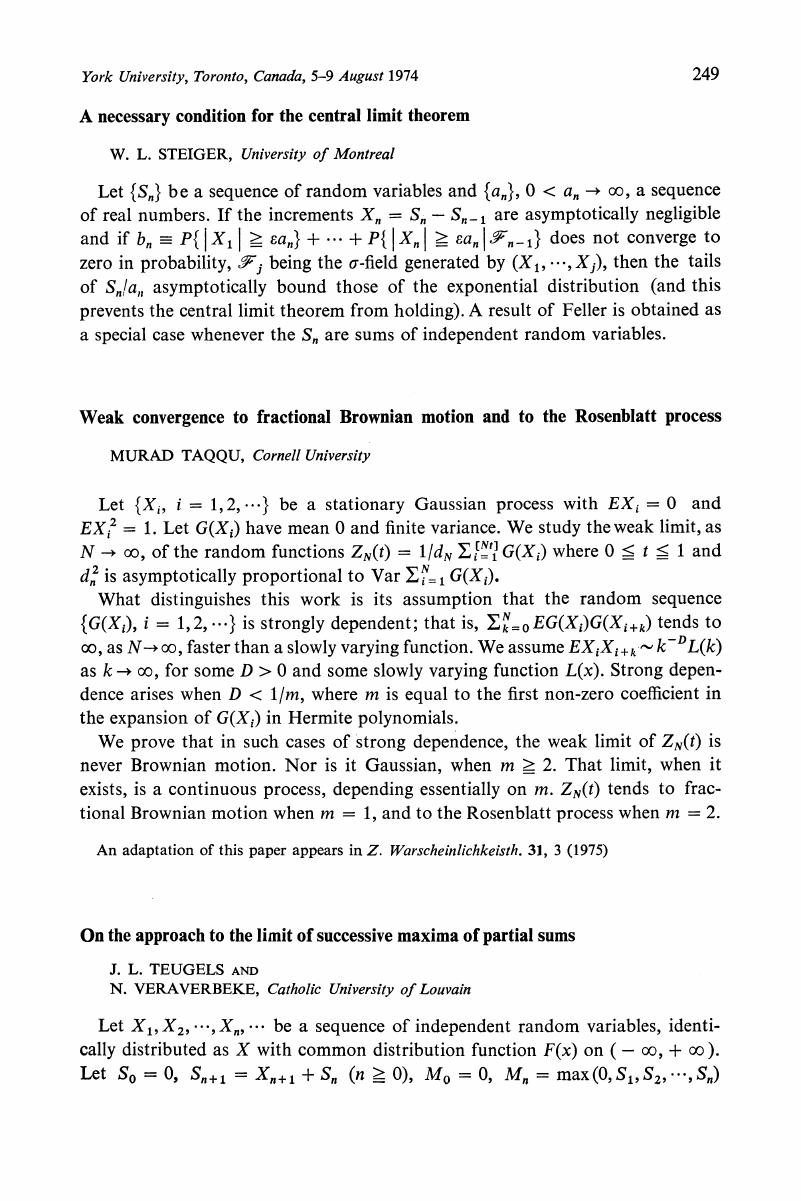No CrossRef data available.
Article contents
On the approach to the limit of successive maxima of partial sums
Published online by Cambridge University Press: 01 July 2016
Abstract
An abstract is not available for this content so a preview has been provided. Please use the Get access link above for information on how to access this content.

Information
- Type
- II Contributed Papers
- Information
- Copyright
- Copyright © Applied Probability Trust 1975
References
[1]
Cheong, C. K. and Heathcote, C. R. (1965) On the rate of convergence of waiting times. J. Austral. Math. Soc.
5, 365–373.Google Scholar
[2]
Craven, B. D. and Shanbhag, D. N. (1973) The number of customers in a busy period. The Manchester-Sheffield Sheffield School of Probability and Statistics. Research Report
140/BDC & DNS 1.Google Scholar
[3]
Heathcote, C. R. (1967) Complete exponential convergence and some related topics. J. Appl. Prob.
4, 217–256.Google Scholar
[4]
Kingman, J. F. C. (1962) Some inequalities for the queue G/G/1. Biometrika
49, 315–324.Google Scholar
[5]
Veraverbeke, N. and Teugels, J. L. (1975) Regular speed of convergence for the maximum of a random walk. Procedings of the Colloquium of the Bolyai János Mathematical Society, Hungary.Google Scholar

